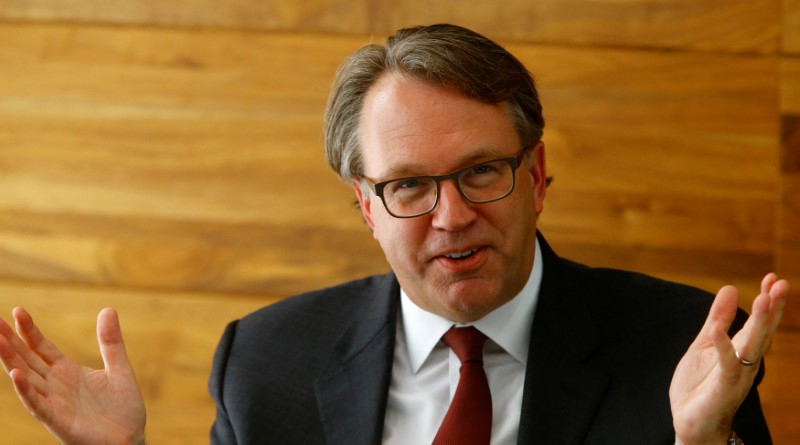 © Reuters. FILE PHOTO – U.S. central banker Williams addresses news conference in Zurich
© Reuters. FILE PHOTO – U.S. central banker Williams addresses news conference in ZurichBy Ann Saphir
SAN FRANCISCO (Reuters) – San Francisco Fed President John Williams on Monday laid out a case for an approach to setting U.S. interest rates that, if adopted today, would translate to keeping rates lower for longer in order to give a firmer boost to inflation.
Using so-called price-level targeting, either alone or combined with another approach like a higher inflation target, would help stabilize inflation and keep unemployment low not only when interest rates are near zero but also even when they are higher, Williams told reporters ahead of the paper’s release.
Unlike some well-known monetary policy rules, it works “even if policymakers have a very imperfect understanding of the levels of potential output or other structural changes affecting the economy,” he wrote in the paper, published in the bank’s latest Economic Letter.
Most of his paper was devoted to showing that analyst estimates of potential economic output have been wildly wrong. Some of the most influential monetary policy rules in use today rely on estimates of potential output. Price-level targeting is advantageous because it does not, Williams said.
Williams said he is not advocating for an immediate switch, but rather serious discussion over the next couple years on the best way to set rates, given that rates are unlikely to rise as high as in past expansions.
“If we don’t do anything,” Williams told reporters “when the next recession hits … central banks will find themselves back in the same problem we had in the last decade,” when they had to turn to politically controversial bond-buying.
Coming just days after President Donald Trump tapped Fed Governor Jerome Powell to be the next head of the U.S. central bank, Williams’ paper serves notice that Fed policy may after all be headed for a sea change.
Moderating any debate over a new monetary-policy approach will fall to Powell if he is confirmed by the U.S. Senate in coming months to succeed Fed Chair Janet Yellen when her term ends in early February. Powell is expected to make few changes to Fed policy in the short term.
Getting to a new framework could take two years or a bit more, Williams said, around the time when he expects the Fed to have completed its current round of rate hikes.
“It would be optimal to have a kind of a decision around what’s the best framework that we should be using well before the next recession,” he said.
Fusion Media or anyone involved with Fusion Media will not accept any liability for loss or damage as a result of reliance on the information including data, quotes, charts and buy/sell signals contained within this website. Please be fully informed regarding the risks and costs associated with trading the financial markets, it is one of the riskiest investment forms possible.
Source: Investing.com



























